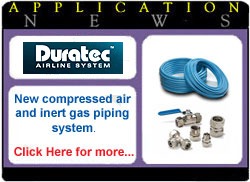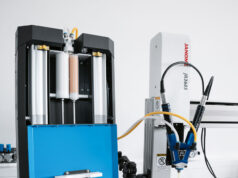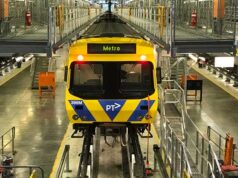 Operating efficiently is the first priority for any business. This mandate becomes even more important with today’s soaring energy costs, which are driving energy conservation measures within the largest corporations as well as the smallest shops.
Operating efficiently is the first priority for any business. This mandate becomes even more important with today’s soaring energy costs, which are driving energy conservation measures within the largest corporations as well as the smallest shops.
According to a study commissioned by the U.S. Department of Energy (DOE), compressed air accounts for 10 percent of all electricity and nearly 16 percent of all motor system energy used in manufacturing facilities. With 82 percent of manufacturing facilities housing compressed air and inert gas distribution systems, its uses have become widespread and varied. Plant air, hand tool operations, valve actuation and robotic installations are just a few of the potential uses for compressed air. However, compressed air system leakage is an everyday occurrence, and more than just air is getting out. Money is lost in the form of wasted energy, wear and tear on compressors, and increased operating and maintenance expense.
An innovative HDPE/aluminum composite piping system has been designed to address this industry problem by reducing leaks and costs, and improving the overall performance of compressed air and inert gas piping systems.
Innovative blend of technology
This new compressed air and inert gas piping system consists of an inner and outer layer of tough high density polyethylene (HDPE), permanently bonded to an aluminum core. The smooth inner HDPE layer will not rust, corrode, pit or scale, which translates to lower pressure drops, higher flow rates, reduced system maintenance and an overall extended life for the system. The outer HDPE layer provides immediate system identification, thanks to its blue color and green print line, while it protects against condensation and corrosion in the toughest industrial environments. In the middle is a unique aluminum core that provides the strength and rigidity of traditional metallic piping without any of the shortcomings of metal pipe.
Fewer pipe joints + engineered fittings= less leakage
The unique combination of metal and plastic creates a flexible yet rigid pipe that will not sag. Its long, lightweight coils cut down on the number of potential leak points in a compressed air system. And the pipe can be easily bent by hand; once bent it maintains its shape, greatly reducing the number of fittings required. The fittings used on this composite pipe are supplied in either nickel plated brass or stainless steel and feature simple mechanical connections that require no special tools for installation. Each fitting incorporates a double o-ring seal that ensures maximum long-term joint integrity at elevated temperatures and pressures. These fittings may be easily removed and reused when system maintenance or modifications are required. And as an added benefit, the need for soldering or threading pipe on site is eliminated. Health and safety are assured In many cases, especially in the food and beverage industry, it is imperative that pipe and fittings be contaminant-free. Coils of composite pipe and fittings are free of any oils or other contaminants and are packaged to ensure they arrive clean and free of damage. The HDPE plastic and colorant used to make this composite pipe, as well as fittings made with 316 stainless steel also meet FDA guidelines.
The unique construction of composite pipe means that accidental impact or puncture of the pipe results in a safe, ductile mode of failure. The pipe has been third-party tested and certified to stringent OSHA safety requirements and approved by California OSHA for use in compressed air systems. In addition, composite pipe and fittings meet ASME B31.3 Process Piping and B31.9 Building Services Piping Codes.
Rated for long-term continuous operating pressures of 200 psi at 73°F (23°C) and 160 psi at 140°F (71°C), composite pipe and fitting assemblies are also capable of sustaining quick burst pressures in excess of 800 psi. This built-in safety factor ensures system performance and provides peace of mind for designers and facility managers.
Reduced costs
Installing the new composite pipe and fitting system for compressed air and inert gas systems results in savings in material cost, installation cost and overall system operating cost.
Composite pipe and associated fittings are less expensive than metallic alternatives. The entire system is easily installed, modified or expanded without the need for specialized training or equipment. This means reduced downtime and a more productive system.
The advantages of HDPE plastic combined with aluminum has allowed for the birth of a new and innovative compressed air and inert gas distribution system. The result is a tougher, better performing and longer-lasting system that sets a new benchmark for piping systems while saving time and money.
 IPEX Inc.’s Duratec Airline Compressed Air and Inert Gas Distribution System utilizes the benefits of both plastic and metal.
IPEX Inc.’s Duratec Airline Compressed Air and Inert Gas Distribution System utilizes the benefits of both plastic and metal.
For more details, contact IPEX Industrial Sales, 2441 Royal Windsor
Drive, Mississauga, ON, Canada L5J 4C7; (800) 463-9572, fax (905)
403-1294 e-mail: marketing@ipexinc.com, www.ipexinc.com.









